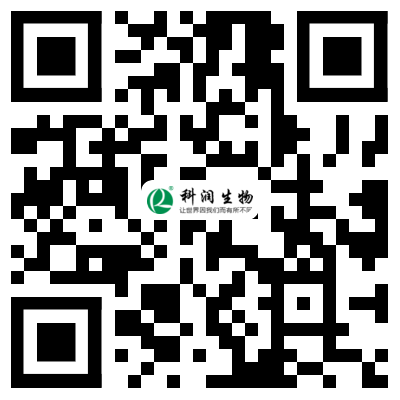How to classify dyeing auxiliaries?
There are many types of dyeing auxiliaries, including dyeing agents, dispersants, scouring agents, softeners, wool enhancers, polyester low-temperature dyeing carriers, alternative alkali, CT powder, integrated dispersants, phosphorus free environmental integrants, acid levelers, cotton levelers, acrylic levelers, smoothing agents, mercerizing penetrants (mercerizing oil), chemical fiber finishes( Polyester oil agent, POY oil agent), high efficiency decocting powder, hydrogen peroxide stabilizer, desilication agent, foaming agent, soaping agent (low foaming soaping agent, acid soaping agent, anti staining soaping agent for white floor), shrinking agent, liquid wax (yarn smoothing agent), finishing agent, antistatic agent, wool mercerizing agent, fuzzing agent, color fixing agent (formaldehyde free fixing agent, turquoise blue fixing agent, color changing fixing agent, acid fixing agent), stiffening agent Oxygen bleaching stabilizer, degreasing agent and printing aid.
This paper mainly introduces the following three kinds of problems
Scouring AIDS
Desizing, scouring, bleaching and mercerizing are all important processes before printing and dyeing, which are called scouring.
Scouring is to boil the desized cotton fabric in 10 g / L dilute caustic soda solution for several hours to remove the impurities such as cottonseed hull, wax, pectin, nitrogen-containing substances, pigment, etc. on the cotton fiber and the size remaining on the cloth, so as to obtain good appearance and water absorption, and effectively improve the dyeing and finishing effect.
The synthetic fiber does not need scouring, but the blended fabric with cotton fiber still needs scouring, but soda ash should be used instead of caustic soda, or caustic soda solution with lower concentration should be used.
Some surfactants should be added to the scouring liquid to improve the permeability of alkali liquor, promote the emulsification of wax, and further emulsify and disperse impurities separated from fiber in the scouring liquid.
printing assistant
Pigment printing is to use the film-forming function of adhesive to firmly adhere the insoluble dye to the fabric, so as to achieve the purpose of coloring.
Adhesive is the main component of pigment printing paste. It is a kind of polymer film-forming material. The coating adheres to the fabric through film-forming. Therefore, the adhesive is required to have strong adhesion and reproducibility to the fabric, aging resistance, solvent resistance, acid and alkali resistance, chemical resistance, clear and transparent film-forming, no discoloration, no damage to the fiber after printing, certain elasticity, good handle, and easy to remove from the printing machine Remove the supernatant.
Thickener is another important component of pigment printing paste. It can thicken dye, promote adhesion and emulsification, and make printed fabric obtain uniform and clear pattern. It can not only improve the color yield and brightness, but also reduce the air pollution by using less or no kerosene in the printing paste.
There are two kinds of synthetic thickeners: anionic thickener and non-ionic thickener. The former has strong adaptability and can be used for anti dyeing and pad dyeing printing, but the thickening effect is poor; the latter has high viscosity and thickening effect, and has no adverse effect on the brightness, brushing fastness and softness of printed fabrics.
The main function of cross-linking agent is to improve the adhesive's fixation ability. Printing has better firmness, and can also reduce the curing temperature. Combined with the actual curing time, the amount of cross-linking agent should be appropriate, otherwise the hand feeling of fabric will be poor.
The purpose of emulsifier is to get a good emulsifier thickener. Generally, alkyl phenol polyoxyethylene ether with blocked end group is used, and then isocyanate is used to block the end group.
Pigment printing auxiliaries include softener, dispersant and defoamer.
Dyeing auxiliaries
Dyeing agent is the main body of dyeing process. Different fiber fabrics use different dyeing agents according to different processes. The auxiliaries for dye processing include cosolvent, dispersant, chromogenic agent and phthalocyanine auxiliaries.
Dyes used in dyeing include direct dyes, vat dyes, reactive dyes, phthalocyanine dyes and insoluble azo dyes.
Leveling agents include natural fiber leveling agent, synthetic fiber leveling agent and blended fabric leveling agent. The condition of leveling agent is that the dye can be slowly absorbed by the fiber or the dark part of the dye can diffuse to the light part without reducing the fastness of dyeing. All auxiliaries with retarding and transferring effects are called levelling agents.
There are three kinds of fixing agents: cationic surfactants, quaternary ammonium salts without surface activity and resin fixing agents. Fixing agents can make dyes form dye salts insoluble in water, or make dye molecules increase and insoluble in water, so as to improve the fastness of dyeing.
Dispersant is an indispensable auxiliary in dye processing and dye application. It can disperse dye particles to about 1 μ m, which is helpful for particle crushing and maintaining the stability of dye dispersion. Dispersants are mostly various types of surface agents, including anionic, cationic, nonionic, amphoteric and high molecular.
Fluorescent brightener FWA, for short, can whiten the yellow and brown pigment on the fabric which cannot be removed by chemical bleaching with the aid of optical complementary effect. Due to the enhanced luminosity, the whiteness is more beautiful.
Most of the softeners have fragrance, most of the aromatics and dyes are petroleum derivatives, containing benzene. If the printing and dyeing auxiliary manufacturers use poor grade raw materials, it will also cause skin irritation. In the process of washing clothes, the small fibers are often entangled, tangled together, or even broken. After washing clothes for many times, the alkaline effect of detergent affects the inherent smoothness, extensibility and elasticity of the fibers, which shows that the whole clothes look old and shapeless, and feel stiff when touching. The more times the clothes are washed, the more obvious the feeling is Obviously.
The function of the fabric softener is like a protective film on the surface of the fabric fibers. The friction coefficient between the fibers is reduced due to the adsorption of the softener on the fiber surface.





Kelun Chinese station

Kerun International Station
 Jimo,Qingdao,China
Jimo,Qingdao,China
 0086-532-86538266
0086-532-86538266
 Jimo,Qingdao,China
Jimo,Qingdao,China
 0086-532-86538255
0086-532-86538255
 Jimo,Qingdao,China
Jimo,Qingdao,China
 0086-532- 86538288
0086-532- 86538288